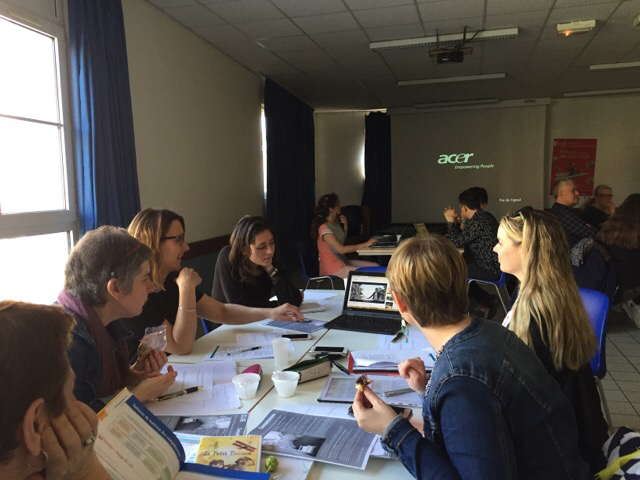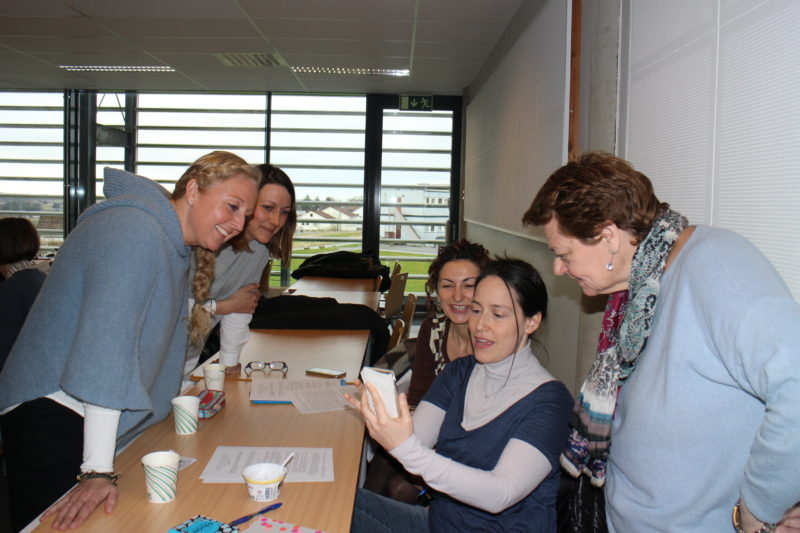CLAE I is project about the improvement of critical literacy and critical awareness in education, focusing on the following common goal: How can we improve critical literacy and awareness among pupils (12-13 years old).
Objectives
- To chart and to compare literacy practices in France and Norway and to learn from other “teaching cultures” and educational systems.
- To discuss and to experiment with possible methods for the improvement of critical literacy and awareness in schools with 12-13-year-old pupils.
- To develop innovative learning methodologies, resources and activities, with a clear focus on critical literacy and awareness as a methodology and as a learning outcome.
Who?
4 schools in Norway (Jærskolen), 3 schools in France (Dunkirk-area) + Headmasters and other public actors + 8 teachers in Norway and 9 teachers in France, working within the fields of Norwegian/French (mother tongue), History/Social Sciences and English as a foreign language + A multidisciplinary research group from the University of Stavanger
How?
Through a grounded theory approach, which means that we did not go into the project trying to verify existing theoretical perspectives in relation to critical literacy. The idea was:
“to extract the meaning of an event (…), to link various elements in a situation in an explanatory schema, (…) to renew the comprehension of a phenomenon by shedding a different light upon it” (Paillé, 1994).
The “phenomenon” in question was framed in the following way: “How can we improve critical literacy and awareness among pupils?” The teachers, researchers and headmasters assumed the role of a “community of inquiry” (Daniel et al., 2005; Dewey, 1930). This “community of inquiry” operated through a 3-step process during the first year: 1. Intensive exchanges between teachers and researchers (conferences, workshops and seminars), which resulted in the production of a common Guide for Critical Teaching (20th – 25th of March 2017); 2. Designing teaching methods and testing practices that focus on the development of critical literacy, documented through log writing (May-June 2017); 3. Observations of teaching practices and interviews with teachers to gain an understanding of the way(s) in which they perceived and used critical literacy methods in their own practice and discipline (November-December 2017)
Temporary conclusions
“The differences between teaching traditions, teaching practices and disciplinary conceptions that appear in the French and Norwegian logs are in many ways interesting because they seem to highlight the differences between what researchers in the field have qualified as critical competence related to skills (analysing arguments, credibility of sources, answering, asking questions, etc.) and critical competence related to attitudes (willingness to take the whole situation into account, willingness to look for alternatives, etc.) (Ennis, 2016; Pascarella, 2006). A possible general observation at this early stage is that critical literacy in the French context seems to be more focused on disciplinary skills development while in Norway the focus tends to be more on critical literacy attitudes. These differences are particularly strong in French, Norwegian and Social Sciences but should be confirmed by further analyses.
Another interesting observation is that most learning outcomes presented in the French and Norwegian logs focus both on acquisition of creative skills and logical skills and on responsible engagement (i.e. engagement in the reflection/discussion) in many different ways, but very few logs have focused on the acquisition of metacognitive skills, which are based on the capacity to evaluate thinking and viewpoints of peers; and not only the evaluation of thinking and viewpoints which are in a text or a document. This is probably an important aspect of the project which should be focused on in the next phases of the project, not only the many ways critical literacy can be defined as a skill or as an attitude, but also the ways it should or could be assessed.”
Article text authors:
Alexandre Dessingué, Hans-Erik Bugge, Unni Fuglestad, Ketil Knutsen, Ingrid Nielsen, Silje A. Normand, Milica Savic og David-Alexandre Wagner from the University of Stavanger
Links:
CLAE I project report


